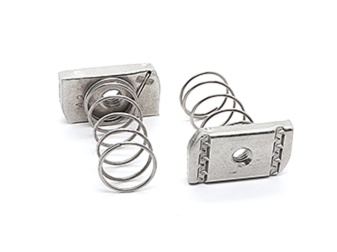авг. . 13, 2024 07:12 Back to list
Determining the Optimal Diameter for Anchor Bolt Holes in Construction Applications
Understanding Anchor Bolt Hole Diameter Key Considerations for Construction
Anchor bolts are a critical component in the construction and engineering fields, serving as the backbone of many structural connections. They secure structural elements to concrete foundations, ensuring stability and safety for buildings, bridges, and various infrastructure projects. One of the essential aspects to consider when working with anchor bolts is the diameter of the holes they are fixed into. The diameter of the anchor bolt hole plays a pivotal role in the overall strength and reliability of the structure.
What is Anchor Bolt Hole Diameter?
The anchor bolt hole diameter refers to the size of the hole drilled into the concrete or masonry into which the anchor bolt will be placed. This diameter is determined by several factors, including the size of the anchor bolt itself, the type of loading that the connection will experience (tension or shear), and the material properties of both the bolt and the substrate.
Importance of Correct Diameter
Selecting the correct hole diameter is crucial for multiple reasons. First and foremost, an improperly sized hole can lead to insufficient embedment of the anchor bolt, contributing to reduced load-bearing capacity. If the hole is too large, it may lead to anchor slippage or failure, while a hole that is too small can cause difficulties during installation and increase the risk of bolt breakage or material distress.
Moreover, the hole diameter also affects the bond strength between the anchor bolt and the surrounding material. A well-fitted hole allows for better adhesion and load distribution, enhancing the overall performance of the anchor bolt. Designers and engineers must adhere to industry standards and guidelines to ensure that the chosen diameter supports the intended load requirements.
Factors Influencing Hole Diameter
anchor bolt hole diameter

Several factors must be considered when determining the appropriate anchor bolt hole diameter
1. Anchor Bolt Size The diameter of the anchor bolt is the primary reference for selecting the hole size. Typically, there should be a slight clearance between the bolt and the hole to facilitate installation while ensuring that the bolt is adequately secured.
2. Concrete Quality The compressive strength of the concrete affects the size of the hole. Higher strength concrete can support a tighter fit with smaller diameter holes, whereas lower strength concrete may need larger holes to avoid cracking and damage during the installation of the anchor bolts.
3. Type of Application The intended use and load conditions of the anchor bolts must be considered. For instance, heavy machinery may require larger holes to accommodate larger bolts, while light structures may get by with smaller diameters.
4. Environmental Conditions Factors such as exposure to moisture, chemicals, and temperature changes can influence the material behavior, requiring specific considerations in hole sizing to enhance durability and lifespan.
Conclusion
In summary, the anchor bolt hole diameter is a vital consideration in structural design and construction. A systematic approach to determining the correct diameter can significantly impact the integrity and safety of the structure. By understanding the relationship between hole diameter, anchor bolt size, and environmental considerations, engineers can create designs that ensure the longevity and reliability of their projects. Adhering to industry standards and leveraging best practices in the selection of anchor bolt hole diameters will ultimately contribute to safe, robust, and enduring structures capable of withstanding the test of time.


